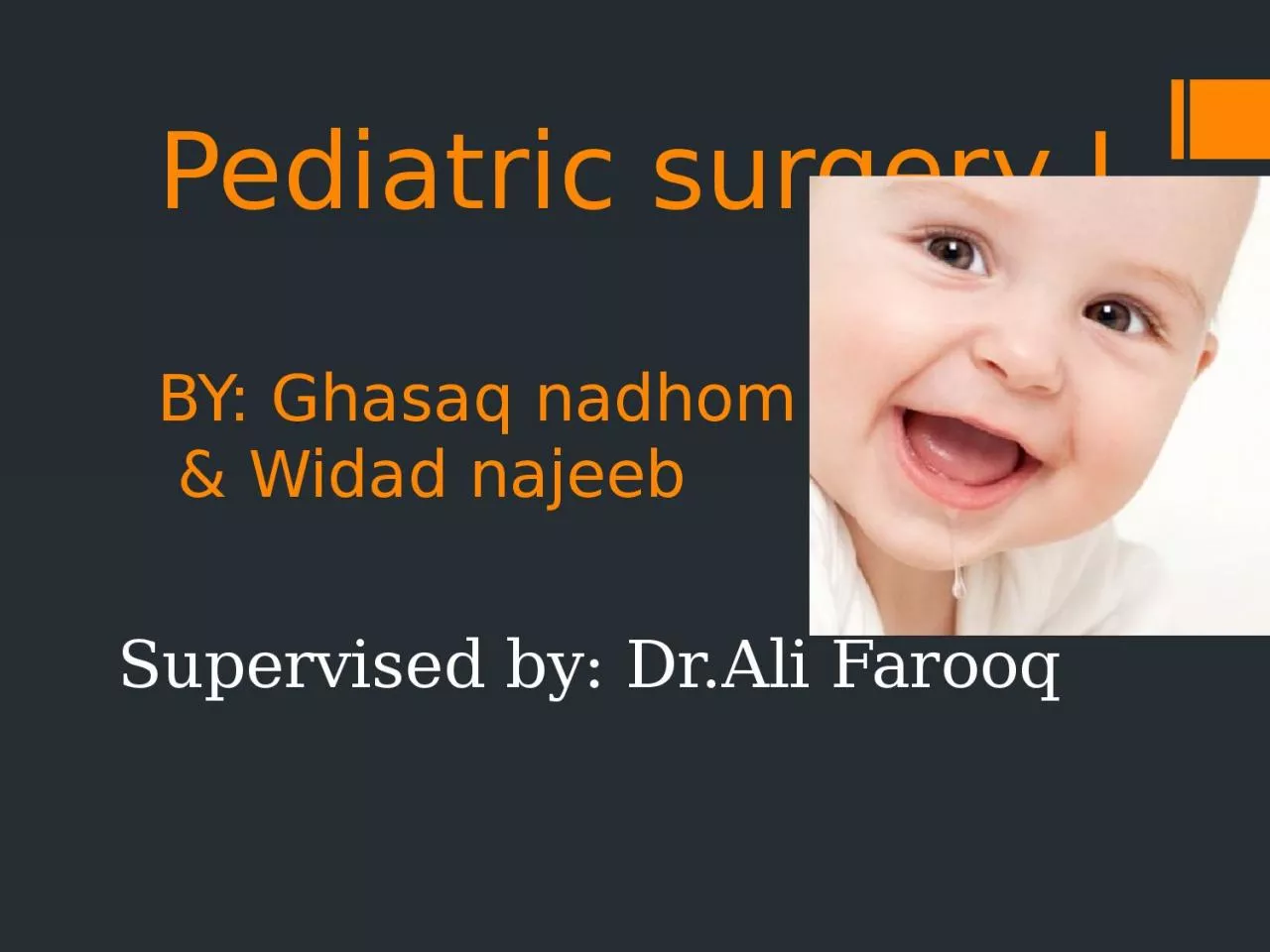

Ghasaq nadhom amp Widad najeeb Supervised by DrAli Farooq Case 1 2 days male infant presented with difficulty in breathing and feeding since birth with excessive secretion from mouth and nose frothy secretion on examination the baby is ID: 932627
Download Presentation The PPT/PDF document "Pediatric surgery I BY:" is the property of its rightful owner. Permission is granted to download and print the materials on this web site for personal, non-commercial use only, and to display it on your personal computer provided you do not modify the materials and that you retain all copyright notices contained in the materials. By downloading content from our website, you accept the terms of this agreement.
Slide1
Pediatric surgery IBY: Ghasaq nadhom & Widad najeeb
Supervised by: Dr.Ali Farooq
Slide2Case 1:2 days male infant presented with difficulty in breathing and feeding since birth with excessive secretion from mouth and nose (frothy secretion) on examination the baby is tachypneic , subcostal recession are present , when the doctor try to put NG tube he failed So what is the diagnosis ?esophageal atresia + tracheoesophageal
fistula
Slide3Pathophysiology:Blind end esophageal pouch = pooled secretion. Fistulous connection with trachea = aspiration. Disordered peristalsis in lower esophagus = GERD. Tracheomalacia
= respiratory obstrucrtion
Slide4Presentation:Polyhydraminous. Frothy secretion. Respiratory distress. Resistance to NG tube insertion. Plain X-ray
Slide5Q2. What is the classification of EA+TEF and what is the most common type ?Type A - Esophageal atresia without fistula or so-called pure esophageal atresia (10%) Type B - Esophageal atresia with proximal TEF (<1%) Type C - Esophageal atresia with distal TEF (85%) Type D - Esophageal atresia with proximal and distal TEFs (<1%)
Type E - TEF without esophageal atresia or so-called H-type fistula (4%)
Slide6Classification:
Slide7Q3. What are the management ?initial management :-1-Suctioning.2- Positioning. (45° sitting position)3-Vascular line.4-
Endotracheal intubation. 5-Incubator , warm , humidity. 6-Check for associated anomalies. 7-Referral to pediatric surgical center
Slide8operative management :- Pre-op. Echo study. Intra-op. Esophagoscopy. Intra-op. Bronchoscopy. ThoracotomyA transverse right thoracotomy incision is made from the anterior axillary line to approximately one fingerbreadth posterior to the posterior axillary line at a level 1 cm inferior to the palpable tip of the scapula
Slide9Thank you